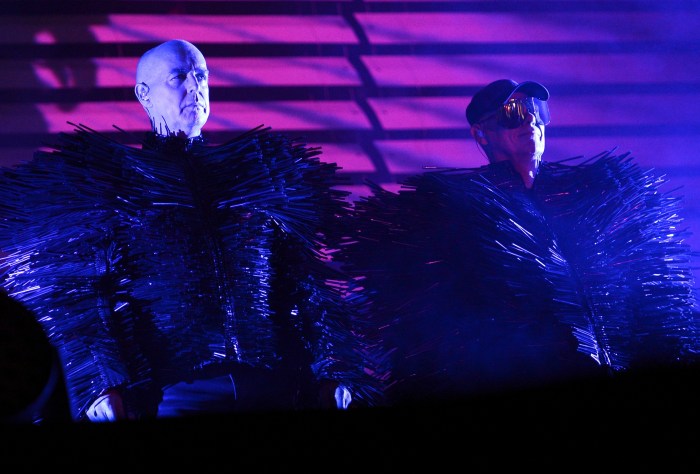By Karen Frantz
In a small Queens College dormitory suite, Adriana Molello is taking a private lesson in violin, but you might not guess it was an instrument she was studying if you just walked into the room.
Molello stands in the common area facing her teacher, Janet Packer, a faculty member of the Longy School of Music of Bard College in Boston.
“This is the step that we learned in dance class,” Packer says, bobbing up and down on her feet as she circles around the room, demonstrating a bourrée dance style. “You should be up on your toes.”
Molello mimics the move, and the two dance for a moment, laughing, before finally returning to their violins.
“Now what I want you to do — that feeling of being up, up, up — can you relate it to this?” Packer says, playing a few measures of a Johann Sebastian Bach composition that alternates loud and soft notes.
Molello plays the phrase, going up on her toes on the loud notes and falling back to her heels on the soft ones as she did while she was dancing.
She is one of 15 musicians — some professionals, some students — who have traveled from near and far to participate in a unique program at Queens College: an innovative workshop that uses dance as an avenue for learning about the music of Bach, one of the most celebrated composers of all time.
At the weeklong program, now in its second year, participants study not just the nitty-gritty technical details of Bach’s music, such as how to read a key signature to figure out his intended tempo, but also learn about Bach’s historical significance, play his music using the instruments of the baroque era and, of course, learn the dances that would have been performed to his music.
“Most modern musicians and their teachers have very little understanding of the character of the various baroque dances,” said Dr. Raymond Erickson, the program creater and a Bach scholar who once taught at Julliard, in an e-mail to TimesLedger Newspapers.
Yet much of the era’s vocal and instrumental music use dance idioms, such as “courante,” “minuet” and “gigue.” Learning those dances thus helps musicians develop a better understanding of Bach’s music, Erickson said.
Participants guide much of their own learning by choosing the pieces they would like to work on. They also receive one-on-one training from six faculty members, including Packer, who is the 2012 Massachusetts String Teachers Studio Teacher of the Year, and they take classes with Erickson.
The workshop’s emphasis on dance seemed to spark excitement among the participants.
“I’m here to immerse myself more into the style, how to play Bach, to learn more about the influences on him,” said Martin Dicke, a longtime director of a Bach Festival in Peoria, Ill.
He said the dance lessons are an integral part of that immersion, and learning “the actual steps that they were using help us understand how to phrase the music, what tempos to use.”
Packer said the workshop is a learning experience for teachers and participants alike, as teachers pass on their historical knowledge about how Bach’s music might have sounded and participants — many of whom are established musicians in their own right — contribute their studied interpretations as well.
She said through such collaborations, a wealth of knowledge is created.
“It’s not enough to say, ‘I want to play like in Bach’s time’ because nobody really knows,” she said, but with programs like the workshop, “we come closer and closer to the spirit of Bach.”
Reach reporter Karen Frantz by e-mail at kfrantz@cnglocal.com or by phone at 718-260-4538.


































